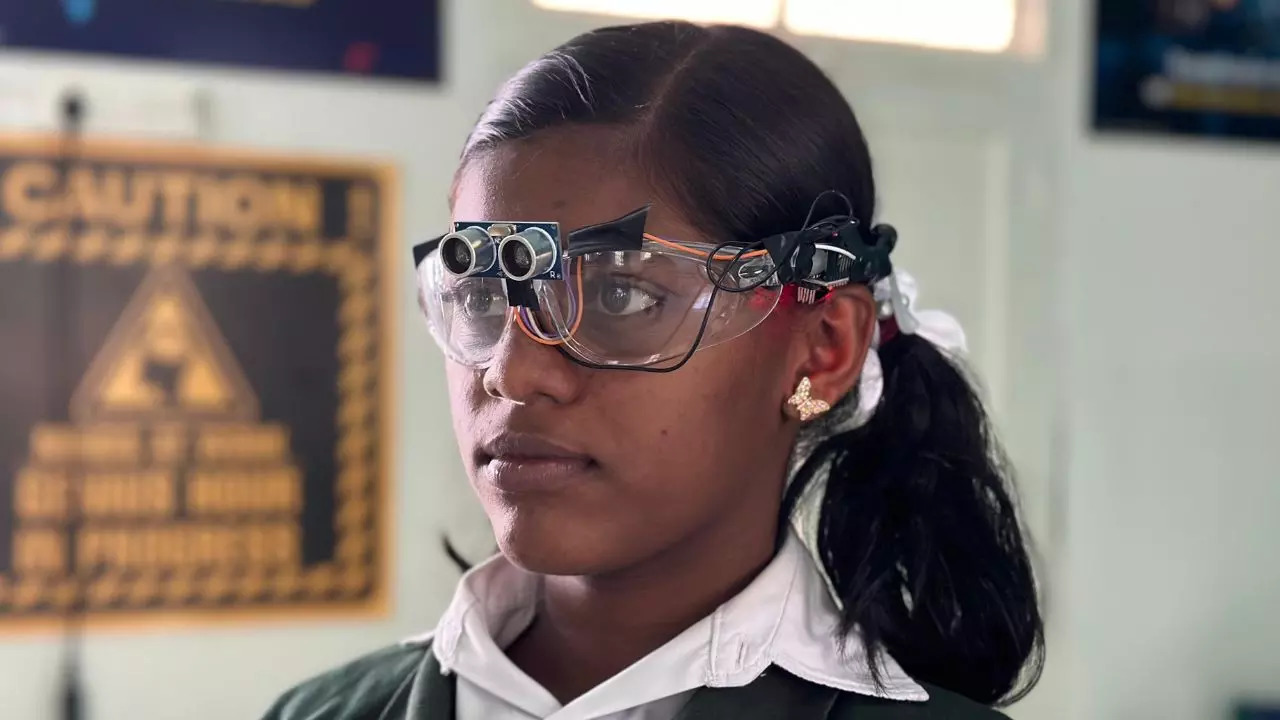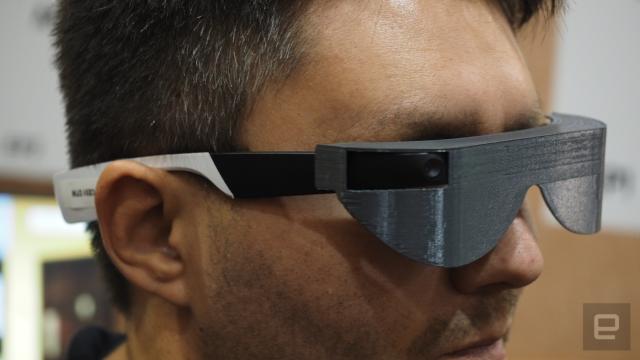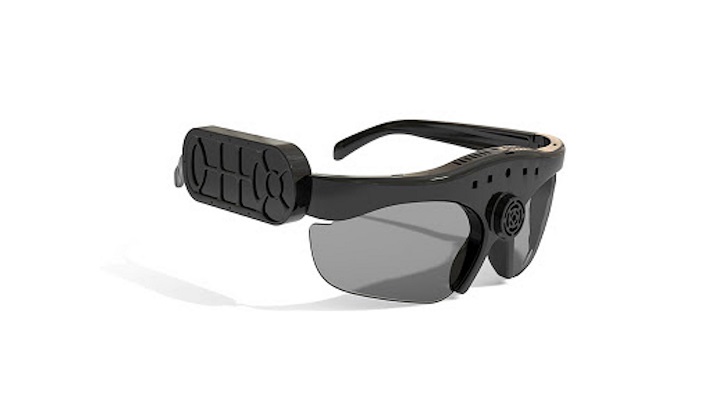Enhancing Accessibility With Assistive Modern Technology for the Blind
The combination of assistive innovation for the blind stands for a pivotal innovation in accessibility, essentially modifying exactly how people browse their environments and engage with society. From display visitors to innovative clever walking sticks, these tools not only improve freedom yet also advertise inclusivity in numerous spheres of life. As we explore the diverse types of assistive tools and their tangible effects on everyday living, it comes to be important to analyze exactly how recurring technical advancements are reshaping the landscape of support for the blind community. What effects do these growths hold for the future of accessibility?
Introduction of Assistive Innovation
Assistive innovation refers to a variety of gadgets and software application designed to enhance the capacities of people with impairments, consisting of those that are aesthetically impaired or blind. This technology plays a vital function in advertising self-reliance and improving the top quality of life for individuals. By offering different techniques for accessing information and executing everyday jobs, assistive modern technology equips people to navigate their settings better.
The growth and implementation of assistive modern technology accept a selection of concepts aimed at promoting accessibility. These concepts include user-centered style, which prioritizes the requirements and preferences of the individual, and the assimilation of technology right into daily tasks. Such developments make certain that assistive devices are not just functional yet also user-friendly and very easy to utilize.
Moreover, assistive innovation incorporates a diverse spectrum of options, from low-tech alternatives like magnifiers to modern technologies such as display readers and Braille screens. The continuous advancement of this field is driven by the requirement to resolve the unique difficulties dealt with by individuals with aesthetic impairments (Wearable technology for low vision). As innovation remains to advance, the potential for improving availability and advertising inclusivity remains promising, eventually adding to a much more fair culture

Kinds Of Assistive Gadgets
Various sorts of assistive gadgets are offered to sustain people that are aesthetically damaged or blind, each made to address particular needs and challenges. These devices can be broadly classified right into three major types: low-tech, mid-tech, and sophisticated services.
Low-tech tools consist of products such as magnifiers, Braille labels, and tactile maps. These are relatively simple tools that enhance the customer's capacity to engage with their atmosphere without requiring complex technology.
Mid-tech gadgets frequently involve more sophisticated features, such as digital magnifiers and portable Braille note-takers. These tools can provide functionalities like speech result, allowing customers to access details much more successfully.

Effect On Daily Living
The availability of different assistive devices substantially improves the high quality of life for people who are aesthetically damaged or blind, influencing their daily living in profound methods. By incorporating modern technologies such as screen readers, Braille presents, and audio summary services into their routines, individuals get better autonomy and self-reliance. These devices promote accessibility to info, enabling people to perform everyday tasks, such as reading emails, navigating public spaces, and appreciating media content.
Moreover, assistive devices empower individuals to engage even more totally in social interactions and neighborhood activities. The ability to utilize smartphones geared up with ease of access functions enables seamless communication and connection with others. This connectivity cultivates a feeling of belonging and lowers sensations of seclusion.
In expert settings, assistive innovation supports performance by permitting people to full work tasks efficiently. Devices like voice acknowledgment software and specialized zoom devices allow users to take part in the labor force on equivalent footing with their sighted peers.

Innovations in Modern Technology
Current technological improvements have actually considerably transformed the landscape of devices offered for individuals that are blind or aesthetically damaged. The assimilation of man-made intelligence (AI) and artificial intelligence has triggered applications that boost navigation and things recognition. As an example, smart device apps can now make use of AI to determine and describe environments in real-time, providing customers with important contextual details.
Furthermore, advancements in haptic innovation have actually caused the growth of wise canes outfitted with sensing units that detect barriers and provide tactile responses. This equips individuals to browse their environment with boosted self-confidence and independence. Moreover, innovations in text-to-speech software program and braille display screens have actually boosted the access of digital content, permitting for smooth interaction with various media.
Wearable modern technologies, such as smart glasses, are also making strides in aiding visual problems. These tools can provide augmented reality experiences, overlaying important info onto the individual's field of vision. Jointly, these advancements not just boost the lifestyle for individuals that are blind however likewise promote higher addition in society. As innovation remains to develop, the capacity for a lot more transformative tools remains coming up.
Future Trends and Innovations
As innovation swiftly progresses, the future of assistive tools for people that find here are blind holds immense guarantee. Innovations in man-made intelligence (AI) and artificial intelligence are poised to reinvent the means blind customers communicate with their atmospheres. AI-driven applications are being developed to improve item acknowledgment, allowing users to identify and navigate their surroundings with higher simplicity and accuracy.
In addition, visit the website developments in haptic comments innovation are allowing the development of responsive maps and navigating aids that give real-time information through touch. These innovations not only enhance mobility but also foster independence. Additionally, wearable devices equipped with augmented fact (AR) attributes are arising, using individuals visual info with audio summaries, therefore linking the space between the digital and physical globes.
In addition, the assimilation of wise home innovation presents brand-new possibilities for ease of access, allowing people to regulate their living atmospheres through voice commands or smart device applications. As cooperation in between tech programmers and the blind community continues, the concentrate on user-centered style will certainly guarantee that future developments are customized to satisfy the distinct needs of this populace (Wearable technology for low vision). The trajectory of assistive modern technology assures a much more comprehensive and empowering future for individuals that are blind
Conclusion
To conclude, assistive innovation plays a crucial duty in improving accessibility for people with visual problems. The diverse selection of tools, including display readers and clever walking sticks, dramatically enhances day-to-day living and promotes self-reliance. Continuous improvements in technology and user-centered style ensure that these tools provide effectively to the special requirements of the blind community. As advancements progression, enhanced inclusivity and empowerment can be prepared for, ultimately enhancing the top quality of life for those influenced by visual disabilities.
The combination of assistive modern technology for the blind represents a pivotal improvement in access, fundamentally altering how individuals browse their atmospheres and involve with culture.Assistive modern technology refers to a range of devices and software designed to enhance the abilities of individuals with impairments, including those who are visually impaired or blind. Wearable technology for low vision.As innovation quickly advances, the future of assistive tools for individuals that are blind holds tremendous assurance. The trajectory of assistive modern technology assures an extra empowering and comprehensive future for individuals who are hyperopia blind
In conclusion, assistive technology plays an essential role in enhancing ease of access for individuals with aesthetic disabilities.